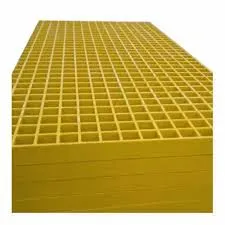loading...
- No. 9, Xingyuan South Street, Dongwaihuan Road, Zaoqiang County, Hengshui, Hebei, China
- admin@zjcomposites.com
- +86 15097380338
- Welcome to visit our website!
reinforced concrete with frp bars mechanics and design
Reinforced Concrete with FRP Bars Mechanics and Design
Reinforced concrete is a fundamental construction material that combines the tensile strength of steel reinforcement with the compressive strength of concrete. However, the corrosion issues associated with traditional steel reinforcement have prompted architects and engineers to explore alternative materials, such as Fiber Reinforced Polymer (FRP) bars. This article delves into the mechanics and design principles underlying the use of FRP bars in reinforced concrete structures.
The Mechanics of FRP Bars
FRP bars are composed of a polymer matrix reinforced with fibers, which can include glass, aramid, or carbon. These materials are lightweight, non-corrosive, and possess high tensile strength, making them suitable for use in environments prone to chemical attack or high humidity. One of the primary mechanical characteristics of FRP bars is their high strength-to-weight ratio, which allows for more efficient structural designs.
When integrated into concrete, FRP bars behave differently than conventional steel reinforcement. While steel bars have a significant yield strength and can undergo plastic deformation before failure, FRP bars are linear elastic materials that exhibit brittle failure. This means that they do not exhibit any noticeable yielding; instead, they may break suddenly under excessive load. Therefore, understanding the load-deformation behavior of FRP bars is critical for successful structural design.
Another essential mechanical aspect is the bond between FRP bars and concrete. The bond strength is crucial for ensuring effective load transfer between the two materials. It is influenced by the surface texture of the bars, the type of resin used, and environmental factors. Advances in surface treatments for FRP bars have improved bond characteristics, thus enhancing their performance in concrete applications.
Design Considerations for FRP Reinforced Concrete
reinforced concrete with frp bars mechanics and design

Designing structures with FRP bars entails careful consideration of various factors, including load-bearing capacity, durability, and serviceability. The design codes for traditional reinforced concrete, such as those founded on the ACI (American Concrete Institute) guidelines, do not fully account for the unique properties of FRP materials. As such, specific design guidelines tailored to FRP applications have emerged, focusing on both bending and shear capacities.
In flexural design, the moment capacity of a concrete section reinforced with FRP can be calculated using principles similar to those for steel-reinforced concrete, but with modifications to account for the differences in material behavior. The maximum permissible tensile stress in FRP bars should be calculated based on the ultimate limit states, which include considering factors such as bar tensile strength, concrete compressive strength, and the dimensions of the structural member.
Shear design is another area that requires attention when utilizing FRP bars. FRP does not contribute to shear resistance in the same way as steel; therefore, designers must ensure that the concrete itself provides adequate shear strength. This can often involve the use of additional shear reinforcement or the design of larger concrete sections.
Application and Benefits
The adoption of FRP bars in reinforced concrete design offers several advantages. Their lightweight nature leads to reduced transportation and handling costs, while their resistance to corrosion ensures longevity, especially in harsh environments such as marine or chemical exposure. Moreover, the non-magnetic properties of FRP materials make them ideal for applications in areas sensitive to magnetic interference.
In conclusion, the integration of FRP bars into reinforced concrete structures presents both unique challenges and opportunities. A thorough understanding of the mechanics underlying their performance, combined with careful design considerations, can lead to innovative and durable concrete structures. As research and technology in this field continue to advance, the use of FRP bars is poised to play an increasingly significant role in modern construction, addressing both structural and environmental challenges.
-
The Rise of FRP Profiles: Strong, Lightweight, and Built to LastNewsJul.14,2025
-
SMC Panel Tanks: A Modern Water Storage Solution for All EnvironmentsNewsJul.14,2025
-
GRP Grating: A Modern Solution for Safe and Durable Access SystemsNewsJul.14,2025
-
Galvanized Steel Water Tanks: Durable, Reliable, and Ready for UseNewsJul.14,2025
-
FRP Mini Mesh Grating: The Safer, Smarter Flooring SolutionNewsJul.14,2025
-
Exploring FRP Vessels: Durable Solutions for Modern Fluid HandlingNewsJul.14,2025
-
GRP Structures: The Future of Lightweight, High-Performance EngineeringNewsJun.20,2025
